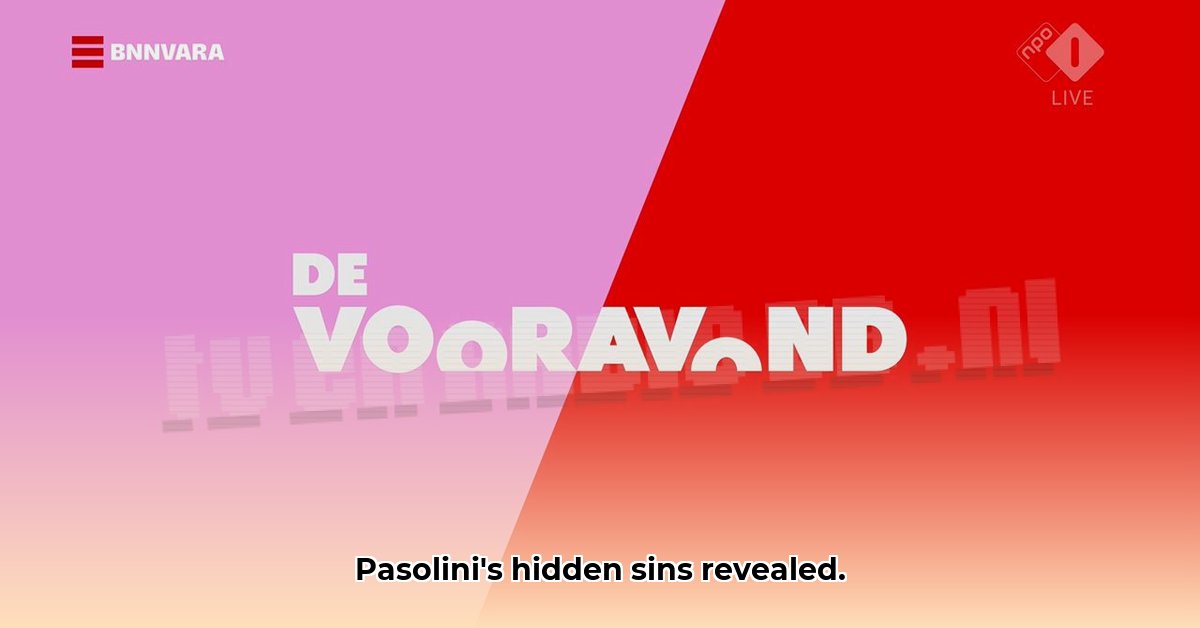
Daden Van Onkuisheid: A Glimpse into Pasolini's Unflinching Self-Portrait
Pier Paolo Pasolini's Daden van Onkuisheid (Acts of Impurity), a posthumously published collection of novellas, isn't merely a literary work; it's a visceral unveiling of a complex soul grappling with identity in the tumultuous socio-political landscape of 1960s and 70s Italy. These stories transcend the fictional, resonating with an almost confessional intimacy, a raw outpouring of poetic imagery and brutally honest self-reflection that captivates and unsettles. The power of these novellas stems from their intimate, almost voyeuristic nature, drawing readers into Pasolini's personal struggles and broader societal conflicts. His genius lies not only in his willingness to confront uncomfortable truths about himself and his society but also in transforming this deeply personal experience into works of breathtaking beauty.
Isn't it striking how these intensely personal narratives, withheld from publication during his lifetime, ultimately reveal themselves as potent statements demanding to be heard? Their posthumous release suggests a deliberate choice, perhaps born of fear or a calculated strategy to reach a more receptive audience. Regardless of the intent, their enduring power is undeniable, a testament to the enduring relevance of his exploration of homosexuality within a rigidly conservative Italy, and a profound defiance of societal silences.
The striking blend of intellectual analysis and emotional rawness in Pasolini's prose is immediately apparent. It's not a clinical dissection of sexuality; it's a deeply visceral experience transcribed onto the page. Pasolini paints vivid pictures with words, immersing the reader in his joys and pain, making them witnesses to his inner turmoil. This immersive quality elevates Daden van Onkuisheid beyond a mere collection of short stories; it becomes a deeply personal and profoundly affecting literary journey.
The stylistic choices and thematic preoccupations in Daden van Onkuisheid present fertile ground for scholarly inquiry. A comparative study analyzing Pasolini's stylistic techniques alongside those of other authors, such as Hans Warren, promises to illuminate the common threads and unique nuances in their creative methods and thematic concerns, uncovering shared influences and broader cultural impact. This comparative approach could reveal hidden parallels, substantially enriching our understanding of both Pasolini’s unique literary voice and his position within the larger literary landscape.
To fully appreciate Daden van Onkuisheid, one must consider the sociopolitical context of 1960s and 70s Italy – a period of profound social transformation. This was a nation caught between tradition and rapid modernization, where the Catholic Church wielded significant influence, and homosexuality faced pervasive stigma. Pasolini's experience was not an isolated one but reflective of the broader societal struggle, playing out in both the public and private spheres. Understanding this is essential to grasping the complexities of his work and the experiences it portrays. His novellas, therefore, become not just personal accounts but microcosms reflecting the struggle of a nation in transition.
Daden van Onkuisheid serves as a vital addition to Pasolini's artistic legacy, offering an intimate portrait often overlooked in favour of his celebrated films. It provides a depth of self-revelation that enriches our understanding of Pasolini—the writer, the poet, the revolutionary—revealing facets absent from his other creations.
Exploring Pasolini's Legacy and Future Research Avenues
The potential for further research on Daden van Onkuisheid is immense. Several avenues for scholarly exploration immediately present themselves:
Comparative Literary Analysis: A detailed comparative study contrasting Pasolini's literary style and thematic concerns with those of Hans Warren, and other writers, would offer insightful perspectives on their similarities and differences, shedding light on shared influences and the impact of their respective cultural contexts.
Critical Edition: The creation of a well-annotated critical edition of Daden van Onkuisheid would greatly assist scholars and general readers alike. This would involve providing detailed contextual information, explanations of obscure references, and a range of critical interpretations, making the work more accessible and enriching the reader's understanding.
Expanded Access through Translation and Publication: Actively promoting the translation and wider publication of Daden van Onkuisheid into multiple languages would ensure greater global accessibility. This would prevent the novellas from remaining confined to a niche readership and ensure that Pasolini’s profound insights reach a wider audience.
Enhancing Academic Discourse: The organization of international academic conferences and symposia specifically focusing on Pasolini’s literary works would serve to foster scholarly dialogue and discussion, bringing together experts, scholars, and enthusiasts to analyze and celebrate his significant contributions to literature.
The unanswered questions surrounding Daden van Onkuisheid are equally compelling. What specific factors delayed its publication? What challenges – personal and social – prevented its earlier release? How did Pasolini's death impact the interpretation of his work and his legacy? These questions necessitate thorough investigation, promising to reveal further layers of insight into this significant – and still somewhat mysterious – aspect of Pasolini’s artistic production and life. The ongoing exploration of Daden van Onkuisheid guarantees continued scholarly debate and deeper appreciation of Pasolini's complex and enduring legacy. The story, much like Pasolini himself, continues to unfold.